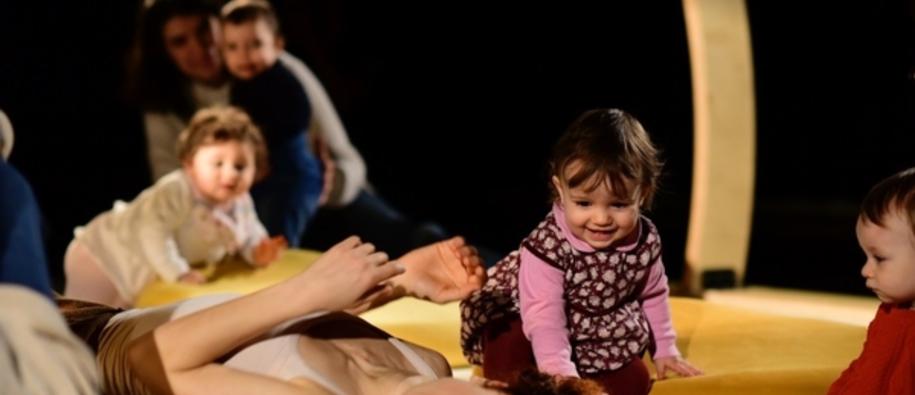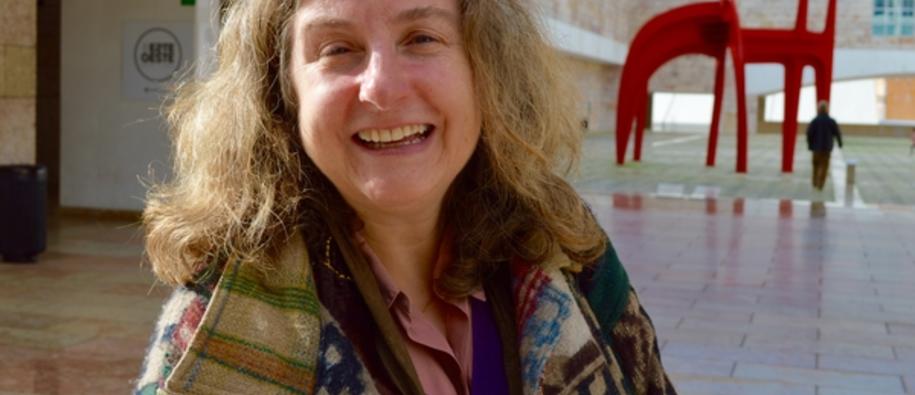Artists from Portugal and Norway has created an innovative dance performance for children aged 0 – 36 months that are aiming to reach both infants, families and early childhood professionals.
The project is part of the Portugese programme 'Cultural diversity and cultural exchange'. With support from Iceland, Norway and Liechtenstein through the EEA Grants, the programme aims to develop activities specifically for children and promote their access to arts.
Communicates in “Gibberish”
“To work with the Norwegian artists was a rich experience. We had a great dialogue and exchange of knowledge on how to communicate with children. In ZYG we use music without words and “Gibberish”- a made up language, to communicate with the audience,” says Helena Silva, artistic director for Companhia de Música Teatral.
ZYG is a collaborative project between the Portugese Companhia de Música Teatral, Fábrica das Artes-CCB and the Norwegian ensemble Dybwikdans. The project intends to promote dialogue between Portuguese and Norwegian cultural institutions that have been important key players in the field of art and education, in particular in early childhood.
"It was an amazing experience for us, being able to work together with the Portugese companies. Our common focus are children in early years, but while we emphasize on dance movements, they concentrate on the music. We learned a great deal from their approach, and have already discussed the possibility of doing research projects together", says Siri Dybwik, from Dybwikdans.
Today, the 21st of May, is the World Day for Cultural Diversity for Dialogue and Development.
The day provides an opportunity to emphasize values such as cross border exchange and dialogue among civilizations, cultures and peoples, and the necessity of making culture beneficial to all groups.
"This is what it's really about", comments Siri.
Six babies on stage
There are six babies in each ZYG-performance. The performance lasts for 20 minutes, and is built around the idea of creating an educational experience with repercussions for the community.
“This project gave us the opportunity to test new innovative approaches. The funding received through the Grants gave room to identify ways to communicate with children in smaller groups – it was great,” says Helena.
Prepared for the unexpected
ZYG is an open installation as well as a show. The performer improvises and tries to offer the children a joint exploration. The two alternating performers are prepared for the unexpected.
“The meaningfulness relates to providing the child with interaction and response. Being together in experience, discovering the layers, and to lift the child's initiative up are stated objectives. To be seen, heard, and taken into an exploration of time and space can create the most beautiful moment; that is how we want the child to experience ZYG,” says Paulo Rodrigues, co-director of ZYG.
Here you find more information about the project
Imitates the perfomer
Helena finds it interesting to observe the interaction between mother and child, as well as the performer and the other babies, during the performance.
“The kids act engaged and surprised and they often try to imitate the performer's movement. There is a particular dynamic when there’s a group. Often, parents learn new things about their babies during the performance; they see their child’s enthusiastic reaction and vocal interaction,” says Helena.
Reaches out to new groups
ZYG has the overall objective to make contemporary art and culture reach a broader audience.
“I think simplicity is the key to communication. Structures, such as a rhythm, create a bond between parents and children. When a mother taps the rhythm on her child’s back, for instance, that is a link to language. This project is not just for babies but for parents as well,” says Helena.



